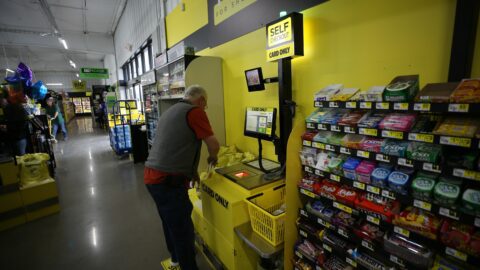The seamless nature of digital commerce has inspired consumers to expect more from the payment experience everywhere they shop — online, in-store and even via social channels. But although brands have invested heavily in functions like product discovery, merchandising and on-site personalization, consumers largely face the same old headaches when they’re finally ready to make a purchase.
“Too many friction points all along the customer journey is a big pain point for consumers, and certainly the checkout or transaction moment plays a part in that friction,” said Margot Juros, Research Director for Retail Technology Strategies at market intelligence and advisory firm IDC in an interview with Retail TouchPoints. “Customers today expect to be able to shop where and when they want and use the payment method they want.”
As a result, consumers are increasingly turning to digital payment methods designed to make the process faster and easier, and many of these new offerings are benefiting retailers as well. For example, research from Cornell University found that adding “one-click checkout” leads online shoppers to spend an average of 28.5% more compared to their previous buying levels.
Dive deeper in the future of the payment experience with our free report Turning Payments into a CX Differentiator with BNPL, Digital Wallets and Better Orchestration.
Advertisement

“The COVID-19 pandemic really shifted consumers’ approach to purchasing in terms of the payment methods they use and how often they visit in person,” said Sam Gazeley, Digital Payment Technologies Industry Analyst at the global technology intelligence firm ABI Research in an interview with Retail TouchPoints. “So even though customers are making more purchases online and using delivery services more often, stores shouldn’t become a relic of the past. Whether it’s in-store or online, the customer expects a seamless experience across all touch points. The most important concepts here are convenience and choice — customers want to choose how they pay for their products and their services and spend the least amount of time possible doing it.”
In fact, more than 15% of shoppers say they will literally abandon a retailer and shop elsewhere if a merchant only has limited payment and financing choices available, according to a recent IDC study.
It’s clear that the payment experience has become the new CX battleground. To tackle this challenge, retailers are increasingly adding on new payment options, from buy now, pay later (BNPL) financing to accepting digital currencies and even biometric-based payment systems.
But adding the choice and convenience consumers want comes with its own set of challenges for retailers, which is why the most crucial piece of any retailer’s payment experience is the backend orchestration.
Real-Time Payments Become a Reality
The pipes and rails are never the sexy part of any system, but they are often the most important, and the same holds true in the world of payments. When it comes to the “pipes” for electronic payments, last year saw an exciting advancement in the form of real-time payments (RTP). In July 2023, the U.S. Federal Reserve Bank launched its own RTP network, called FedNow.
“FedNow enables bank payments to happen instantly,” said Rikhil Bajaj, Principal at payment tech investment firm Tarsadia Investments in an interview with Retail TouchPoints. “But not only are they happening instantly, it’s good funds, [meaning] there’s no risk to that transaction; it’s essentially the same as handing over a dollar to someone in person. With ACH [the dominant electronic banking network used today] you have settlement risks, you have latency. FedNow is an instant, good funds model that can actually happen at potentially an even lower cost than ACH.”
However, adoption of FedNow among U.S. banks is still low. “The challenge with FedNow [at the moment] is that only something like 50 banks currently accept it, so the idea that a large merchant like Walmart can flip a button and accept FedNow is crazy,” said Bajaj. “What you need is an intelligent software layer that sits in between Walmart and FedNow and determines [in which] situations using FedNow makes sense because the bank accepts it, and in which situations using ACH or Visa Direct or MasterCard Send makes sense.”
In fact, software that helps orchestrate the interplay of the increasingly diverse set of payment systems and applications merchants use today is quickly becoming a necessity. “[Retailers] have a lot of different payment processors that they have to work with, because not every processor solves every problem,” explained Bajaj. “Plus you now have digital wallets and BNPL and this huge proliferation of alternative payment types, and in parallel, fraud and chargebacks continue to grow. Then there’s new payment rails emerging like FedNow.”
The Payments Trifecta: Bundling, Analytics & Interoperability
To say that payments are getting complicated might be an understatement, but Bajaj said that he believes the solution is simple: “You have all these different payment vendors, payment rails and payment types that you’re managing, so you need to have some kind of software layer that sits in between that and conducts three key functions,” he said. “One function is bundling — to route transactions intelligently without the need to onboard 40, 50, 100 different payment vendors. The second is analytics, so you can optimize for payments performance. And the third is vendor interoperability, software that enables all these different offerings to work together.”
Finding the right set of software solutions to help manage all this can make huge differences to a retailer’s business, not just in terms of customer experience but also for fraud reduction, cost optimization, ease of entry into new markets through cross-border coordination, increased payment acceptance rates (and a reduction in false rejections) and more.
“The lower pricing power and requirement to achieve digital transformation, coupled with a lot of new-to-market competitors using different, dynamic business models, is creating something of a perfect storm for retailers,” said Gazeley. “And then when you add in things like the constant threat of fraud, chargebacks and disputes, there’s no real shortage of pressures at the moment. Even having the perfect payment setup can’t solve all of these challenges to profitability. I think it’s about taking a big step forward by optimizing payment systems. Besides enabling payment alternatives with lower transaction costs, retailers are going to want to ensure that any providers they work with offer effective fraud protection schemes, as well as streamlined chargeback dispute handling processes and things like that.”
Want to learn how to do all this and more? Download our recent report, Turning Payments into a CX Differentiator with BNPL, Digital Wallets and Better Orchestration.









